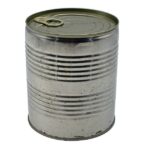Ever wondered what goes on behind the scenes when your veterinarian orders a “clinical pathology” test for your furry, scaly, or feathered companion? It’s more than just drawing blood or collecting a sample; it’s a deep dive into the intricate biochemistry and hematology of your pet’s internal world. Let’s unravel the mystery and explore a quintessential example: the Complete Blood Count, or CBC. Prepare to embark on a journey into the fascinating realm of veterinary diagnostics.
The CBC: A Holistic Snapshot of Hematopoiesis
The Complete Blood Count is a cornerstone of veterinary clinical pathology. It acts as a comprehensive assessment of the cellular components within a patient’s blood. This includes red blood cells (erythrocytes), white blood cells (leukocytes), and platelets (thrombocytes). The CBC provides not just a count of these cells, but also valuable information about their size, shape, and internal contents. It’s a multifaceted diagnostic tool.
Erythrocytes: Oxygen Delivery and Anemia Detection
Erythrocytes, the oxygen carriers of the blood, are meticulously evaluated in a CBC. The red blood cell count (RBC) itself is crucial, indicating the concentration of these cells. Equally important are the mean corpuscular volume (MCV), which reflects the average size of the red blood cells; the mean corpuscular hemoglobin (MCH), representing the average amount of hemoglobin within each red blood cell; and the mean corpuscular hemoglobin concentration (MCHC), indicating the average concentration of hemoglobin within a given volume of red blood cells.
Furthermore, the red cell distribution width (RDW) provides insight into the variation in size of the red blood cells. Elevated RDW signifies anisocytosis, a condition where there is a significant disparity in red blood cell size. Abnormalities in these parameters can indicate various conditions, including anemia (deficiency of red blood cells), polycythemia (excess of red blood cells), and various types of erythrocyte morphological abnormalities. Anemia, in particular, can stem from a myriad of underlying causes, ranging from blood loss to decreased production in the bone marrow, making the CBC a vital tool in its diagnosis and classification. Is it regenerative or non-regenerative? The CBC, coupled with a reticulocyte count, helps determine the bone marrow’s response.
Leukocytes: Guardians of Immunity and Inflammation
White blood cells, the soldiers of the immune system, are rigorously analyzed in a CBC. The total white blood cell count (WBC) provides an overall assessment of the immune response. More importantly, a differential leukocyte count identifies and quantifies the different types of white blood cells: neutrophils, lymphocytes, monocytes, eosinophils, and basophils.
Neutrophils, the first responders to infection, increase in number during bacterial infections or inflammatory processes. Lymphocytes, crucial for adaptive immunity, play a key role in fighting viral infections and producing antibodies. Monocytes, the precursors to macrophages, engulf pathogens and cellular debris. Eosinophils are involved in parasitic infections and allergic reactions, while basophils release histamine and other mediators during inflammatory and allergic responses. Shifts in the differential leukocyte count, such as neutrophilia (increased neutrophils), lymphopenia (decreased lymphocytes), or eosinophilia (increased eosinophils), can pinpoint the nature and severity of an underlying disease.
Thrombocytes: Orchestrating Hemostasis
Thrombocytes, also known as platelets, are essential for blood clotting. The platelet count is a vital parameter in the CBC, indicating the risk of bleeding or thrombosis. Thrombocytopenia (decreased platelet count) can result from various causes, including immune-mediated destruction, decreased production in the bone marrow, or increased consumption due to disseminated intravascular coagulation (DIC). Thrombocytosis (increased platelet count) can be a reactive response to inflammation, iron deficiency, or certain medications.
Beyond the count, the mean platelet volume (MPV) provides information about the average size of platelets. Larger platelets are often younger and more active, indicating increased platelet production. The plateletcrit (PCT) measures the percentage of blood volume occupied by platelets. The CBC provides a critical window into the patient’s hemostatic capabilities.
Interpreting the CBC: A Symphony of Data
The true power of the CBC lies in its interpretation. A single parameter viewed in isolation is rarely conclusive. Instead, the veterinarian integrates the CBC results with the patient’s clinical history, physical examination findings, and other diagnostic tests to arrive at a comprehensive diagnosis. For example, an anemic patient with neutrophilia and elevated liver enzymes may be suffering from an infectious disease affecting the liver. Conversely, an anemic patient with lymphopenia and thrombocytopenia may have a bone marrow disorder.
Automation and Advanced Analysis
Modern veterinary laboratories utilize sophisticated automated hematology analyzers to perform CBCs rapidly and accurately. These instruments employ techniques such as impedance counting, flow cytometry, and laser diffraction to differentiate and enumerate blood cells. Automated analyzers also provide flags or alerts for abnormal cells or results, prompting further investigation by a clinical pathologist. Furthermore, some laboratories offer advanced hematology testing, such as bone marrow aspirate cytology and flow cytometric immunophenotyping, to further characterize hematologic disorders.
The CBC is more than just a test; it’s a gateway to understanding the complex hematologic landscape of your animal companion. This commonplace clinical pathology test is a foundational element in the veterinary diagnostic process, offering critical insights into a patient’s health status and guiding treatment decisions. Its comprehensive assessment of blood cells helps veterinarians diagnose a wide range of conditions, from anemia and infections to bleeding disorders and even cancer. So, the next time your veterinarian orders a CBC, remember that it’s a sophisticated and powerful tool that contributes significantly to the well-being of your beloved animal.










Leave a Comment